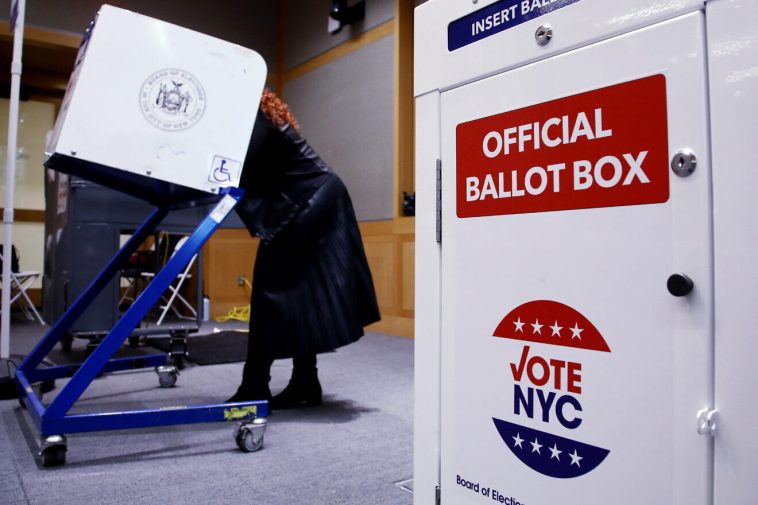Last week, a report released by the Republican Jewish Coalition pointed toward a noticeable shift among Jewish voters in the November 5th election towards President-elect Donald Trump. Their endorsement, it seems, was particularly resonant in densely Jewish populated areas, hinting at the possibility of an increased engagement of these communities with Trump’s policies. This evaluation was performed by WPA Intelligence, a political analytics firm with conservative leanings, utilizing crucial data such as exit polling, residential data, and precinct data to draw conclusions.
The report made an intriguing assertion that there seems to be an emerging political gap within the Jewish communities. This polarization seems to primarily exist between secular and less-engaged Jewish individuals who, in the majority, cast their votes in favor of Vice President Kamala Harris and those who actively participate in Jewish religious practices, who supported Trump.
Upon digging deeper into the data from numerous Jewish neighborhoods and towns, WPA Intelligence observed a clear and unambiguous trend. It was evident that these communities, which are deeply rooted in their faith and regularly participate in communal religious activities, registered significant shifts towards Trump.
The report emphasized that the surge in support for Trump in Jewish neighborhoods wasn’t an isolated event restricted to certain cultural subsets. This trend transcended such boundaries and was outlined across disparate groups. For instance, Trump accrued significant backing from Chassidic and Yeshivish Jews. Furthermore, he also succeeded in rallying support from the Modern Orthodox community.
The seemingly growing affinity for Trump was not merely limited to traditionally conservative Jewish groups, but also, albeit incrementally, surfaced in more progressive Jewish regions such as Oak Park and Upper Manhattan. This shift also manifested itself across diverse geographical and ethnic spectra, with notable occurrences in Persian and ex-Soviet Jewish communities located coast to coast.
This report by the RJC/WPA Intelligence has been dropped into a brewing controversy involving Jewish Republican and Democratic factions, sparking debates over the alleged increased support for Trump among Jewish voters. Much of this argument hinges on how data categorization of ‘Jewish voters’ was executed, a small detail with tremendous impact on poll outcomes.
To illustrate this, we can look at a J Street commissioned survey, which resulted in a conclusion that Trump had only won 26% of the national Jewish vote and a mere 23% in the swing state of Pennsylvania. Correct or incorrect, this points to Jewish voters being some of the most steadfast supporters of Democrats, in stark contrast to other U.S. socioeconomic subgroups, which largely veered towards Trump.
Findings from an Orthodox Union’s Teach Coalition survey, which followed an alternative approach for scrutinizing Jewish votes, painted a drastically different picture. Contrary to the J Street survey, their research saw a significant decline in support for Kamala Harris, with her securing only 48%, as opposed to Trump’s 41% in Pennsylvania.
RJC/WPA Intelligence’s analysis also highlighted a remarkable trend – the Jewish vote, particularly in New York, was heavily tilted towards Trump. There were observable tectonic shifts among Jewish voters in regions densely populated by Jews, such as New Jersey, Michigan, and California.
It appears as though, while Jewish communities remain largely anchored in traditionally Democratic areas, their residential territories seem to be evolving into red islands amidst Democratic seas. The divergence between the residential choice and political preferences of these communities reflects the complex and ever-changing political landscape.
This election, more than anything else, has demonstrated an interesting interplay of Jewish cultural principles and voting behavior. It seems that when religious beliefs intersect with political allegiance, an unexpectedly red wave rises.
Democrats, in their smugness, believe they hold a monopoly over the Jewish vote. However, this election cycle has disproven their presumption. The unexpected shift towards a more conservative outlook among Jewish voters is indicative of their disappointment in the Democrats. It seems Harris and Biden are losing their charm over this demographic.
In conclusion, this election has shed light on some notable shifts in voter behavior within the Jewish community. Rather than following established voting patterns, several Jewish voters demonstrated a change of heart, favoring Trump over Harris. It poses the question – is the steadfast faith of the Democrats in Jewish support starting to wobble?


